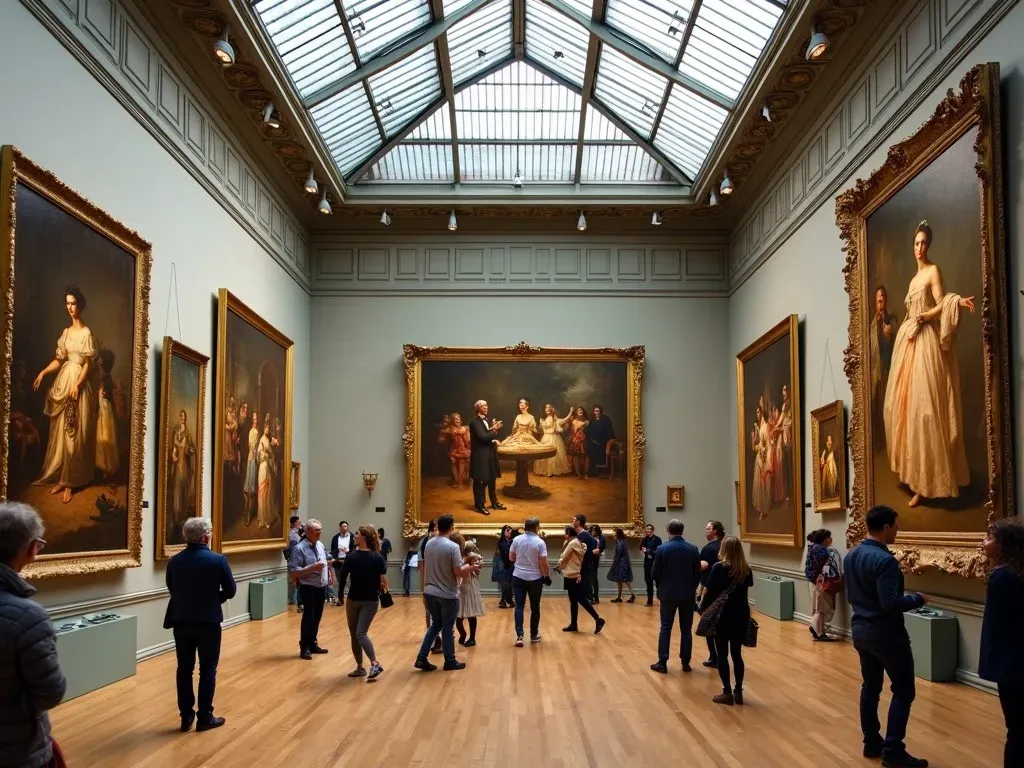London is a treasure trove of culture and history, boasting an incredible array of famous paintings that attract art enthusiasts from around the world. Whether you’re strolling through the hallowed halls of the National Gallery or admiring masterpieces in the Tate Modern, you will encounter artwork that has shaped the very essence of art history. Below, we explore some of the most celebrated paintings you can find in this vibrant city.
The National Gallery
At the heart of London’s art scene lies the National Gallery, home to over 2,300 paintings dating from the 13th to the 19th century. Here are some of the most notable masterpieces you should not miss:
| Painting | Artist | Year | Significance |
|---|---|---|---|
| The Fighting Temeraire | Joseph Mallord William Turner | 1839 | A symbol of the end of the British naval era. |
| Sunflowers | Vincent van Gogh | 1888 | Celebrated for its vibrancy and textural depth. |
| Venus and Mars | Sandro Botticelli | 1485 | A prominent example of Renaissance stance. |
| The Arnolfini Portrait | Jan van Eyck | 1434 | Renowned exemplification of oil-painting mastery. |
| Water Lilies | claude monet | 1916 | A quintessential impressionist work. |
Highlights of the National Gallery
-
The Fighting Temeraire
Renowned as one of Turner’s masterpieces, this painting illustrates the last journey of the HMS Temeraire, symbolizing the transition from old to new technology. -
The Arnolfini Portrait
This iconic work presents an early use of oil paint and complex symbolism, showcasing the artist’s advanced Techniques. -
Sunflowers
Monet’s vibrant portrayal emphasizes the artist’s distinct brushstroke style and particularly holds a mesmerizing allure.
Tate Modern
Home to contemporary masterpieces, Tate Modern stands in stark contrast to the classical ambiance of the National Gallery. Highlighting art from the 20th century onward, here are some must-see works:
| Painting | Artist | Year | Significance |
|---|---|---|---|
| The Kiss | Gustav Klimt | 1907-1908 | A vivid representation of love and intimacy. |
| Composition VIII | Wassily Kandinsky | 1923 | Considered a masterpiece of abstract art. |
| The Persistence of Memory | Salvador Dalí | 1931 | Famous for its dream-like quality and surrealism. |
| Whaam! | Roy Lichtenstein | 1963 | An iconic representation of pop art. |
| Self-Portrait with Cropped Hair | Frida Kahlo | 1940 | A captivating demonstration of identity and feminism. |
Tate Modern Highlights
-
The Kiss
Klimt’s use of gold leaf and intricate detail makes this piece a stunning highlight in the Tate Modern collection. -
Whaam!
Lichtenstein’s bold comic strip-inspired work redefines the boundaries of traditional art, making it both accessible and thought-provoking. -
Self-Portrait with Cropped Hair
This iconic painting by Kahlo deeply explores themes of identity, gender, and personal empowerment.
Reference Video
The British Museum
While primarily known for its extensive historical collections, the British Museum houses some fantastic artworks worth noting:
| Painting | Artist | Year | Significance |
|---|---|---|---|
| A Cornfield | John Constable | 1826 | A masterpiece of landscape painting. |
| The Fighting Temeraire | J.M.W. Turner | 1839 | A time-honored work symbolizing Britain’s naval history. |
| Death of Sardanapalus | Eugène Delacroix | 1827 | A powerful depiction of chaos and emotional energy. |
British Museum Highlights
-
A Cornfield
Constable’s pastoral piece captures the tranquility and beauty of the English landscape. -
Death of Sardanapalus
Delacroix’s dramatic use of color and tumultuous composition initiate the viewer into a historical narrative deeply rooted in emotion.
Art Galleries to Explore
In addition to the aforementioned locations, London is dotted with various art galleries featuring significant paintings. Here’s a list of some galleries to check out:
-
The Courtauld Gallery
- Known for its Impressionist and Post-Impressionist masterpieces, including works by Van Gogh and Monet.
-
Whitechapel Gallery
- Features contemporary art and often showcases new talents in the art community.
-
The Saatchi Gallery
- Focuses on contemporary art, with a reputation for promoting emerging artists.
FAQ
Where can I find Famous Paintings in London?
You can find famous paintings in major art museums such as The National Gallery and Tate Modern, as well as in the British Museum and various smaller galleries throughout the city.
Which painting is the most famous in London?
While opinions may vary, many consider the “The Fighting Temeraire” by J.M.W. Turner to be one of the most famous paintings in London, known for its striking depiction and historical significance.
Is there an entry fee to see paintings in these galleries?
Most of London’s major galleries, including the National Gallery and Tate Modern, offer free entry. However, temporary exhibitions may require a ticket purchase.
How long does it take to see the paintings in London?
Depending on your interest level, you may spend anywhere from a couple of hours to several days exploring London’s vast art collections. Plan your visit based on your art appreciation style!
For further exploration, you can refer to this authentic website to delve deeper into the realm of famous paintings in London.
Whether you consider yourself an art aficionado or a casual observer, London’s famous paintings offer something for everyone. Happy exploring to witness the artistry that has transformed and inspired countless generations!
